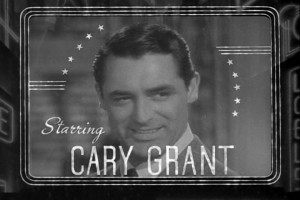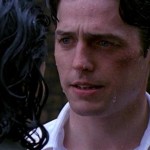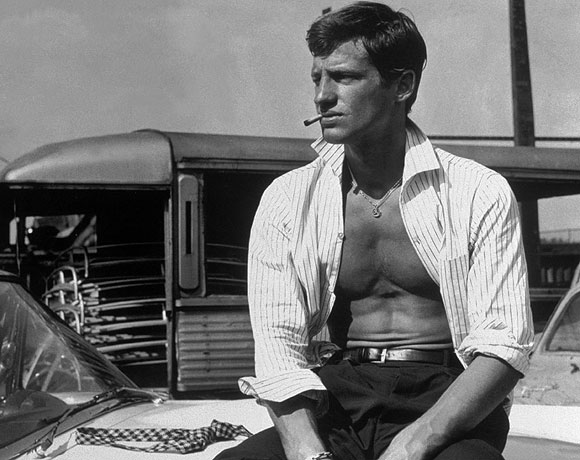Hillary Clinton got a quick stamp of approval from the Senate, President Obama rolled up his sleeves and got to work, Caroline Kennedy withdrew from the New York senatorial race, LeBron James steamrolled the Trail Blazers, the Pacific Northwest College of Art agreed in principle to take over the ailing Museum of Contemporary Craft and Portland Mayor Sam Adams fought an uphill battle for his political life.
 But for my money the best read in the Thursday papers was Elaine Sciolino’s report in the New York Times on the French movie god Jean-Paul Belmondo and the release of his latest film, Un Homme et Son Chien (A Man and His Dog), based on Vittorio De Sica’s 1952 neorealist classic Umberto D.
But for my money the best read in the Thursday papers was Elaine Sciolino’s report in the New York Times on the French movie god Jean-Paul Belmondo and the release of his latest film, Un Homme et Son Chien (A Man and His Dog), based on Vittorio De Sica’s 1952 neorealist classic Umberto D.
Belmondo, he of the broken nose and the seductive grin and the street-tough physique, is 75 now, and people don’t like to see their physical idols grow old: Think of the matronly-plump Elizabeth Taylor, all comfortable at last inside her expansive body, or the Botoxed-so-hard Sophia Loren, so tight in the face that her eyes seem stretched halfway around her temples.

But Belmondo committed a deeper sin. Not only did he age, he also degenerated. He had a stroke in 2001 that left him speechless for six months, with a basically useless right side. He’s struggled back, and speaks now, with difficulty, and has regained some of the use of his body. But he is now plainly, as they say, disabled. And that’s how he plays his new role, as an aging, stoved-up, slowly disintegrating man. “It’s me,” he tells Sciolino, “without any special effects.”
 The French press has not been amused. As Sciolino reports, Un Homme et Son Chien has been greeted with responses ranging from so-so embarrassment to downright outrage. “One can only be staggered by this portrayal of decrepitude ….,” the magazine Le Point moaned. Le Monde complained about “melodramatic overstatement” and “the effort visibly made by the actor in the dialogue.” Le Matin, swinging for the fences, pronounced the entire enterprise “absolutely despicable.” Even Belmondo’s onetime co-star Arielle Dombasle (Amazon, 2000) got into the act. “He is not cerebral,” she said. “People want to see their hero. To see him as an old man who loves his dog is ridiculous.”
The French press has not been amused. As Sciolino reports, Un Homme et Son Chien has been greeted with responses ranging from so-so embarrassment to downright outrage. “One can only be staggered by this portrayal of decrepitude ….,” the magazine Le Point moaned. Le Monde complained about “melodramatic overstatement” and “the effort visibly made by the actor in the dialogue.” Le Matin, swinging for the fences, pronounced the entire enterprise “absolutely despicable.” Even Belmondo’s onetime co-star Arielle Dombasle (Amazon, 2000) got into the act. “He is not cerebral,” she said. “People want to see their hero. To see him as an old man who loves his dog is ridiculous.”
All of this makes me want to see Un Homme et Son Chien very much. As anyone who’s ever read Norse mythology (or Greek, for that matter) knows, even gods die eventually. And it strikes me as monumentally courageous of Belmondo to own up to that profoundly simple fact and let us look in on the process. Maybe the movie’s lousy: I don’t know. But I can only admire a god who comes to even an uneasy peace with his mortality and quietly makes it part of his never-ending story.
*********************
Gods do die, of course, and we remember them in their prime. For Cary Grant it’s The Philadelphia Story or North by Northwest, not Father Goose. I don’t know why thinking about Belmondo got me also thinking about Grant — their screen personas are very different — but it did. Maybe it’s because they were both stars in the old-fashioned sense: magnetic actors who played themselves, no matter what their role happened to be. We have wonderful actors on screen now, and several of them “better” than Belmondo or Grant, in that lose-yourself-in-the-role-and-create-something-new protean sense. But do they have the same impact?
Contemporary film has no Cary Grant. Hugh Grant may come the closest to Cary Grant the light comedian, but for all his comic skill, Hugh has no dark shadings. Harrison Ford approaches Cary Grant’s impact as a dramatic actor, but Ford hasn’t struck a funny note since the Star Wars movies, and even in those it was comic-book comedy. If you could somehow fuse Ford and Hugh Grant you’d get one genuine old-fashioned movie star.
Think about that the next time you watch Bringing Up Baby or Indiscreet. And think about what an extraordinary actor Cary Grant was.
